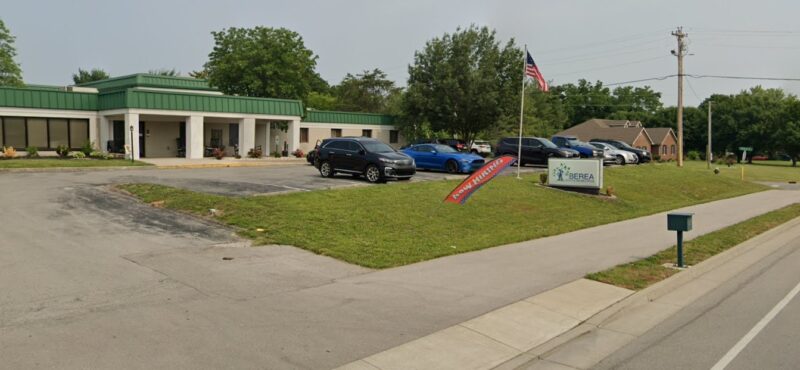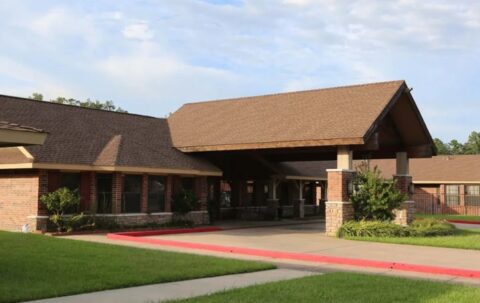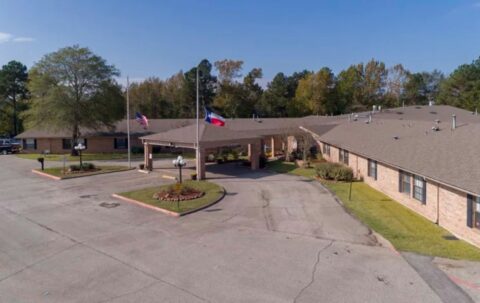State Findings:
Provide safe and appropriate respiratory care for a resident when needed.
**NOTE- TERMS IN BRACKETS HAVE BEEN EDITED TO PROTECT CONFIDENTIALITY** 47852
Based on interview, record review, and review of the facility’s policy, the facility failed to ensure a resident who needed respiratory care was provided consistent with professional standards of practice for one (1) of five (5) sampled residents (Resident (R) 1).
The facility admitted R1 on [DATE], for rehabilitation after sustaining a spinal fracture. R1 was noted to have a Physician’s Order dated [DATE], for oxygen at five liters per minute (5 LPM) continuously. However, R1 was sent back to the hospital on [DATE] at 12:25 AM, due to low oxygen saturation (O2 sat) level of 41% while on 2 LPM oxygen (not the ordered 5 LPM) per a nasal cannula (nc). R1 was unresponsive to stimuli (painful stimulus used to assess for brain function) with pupils fixed and non-reactive to light or accommodation.
R1 was admitted to Hospital #1 on [DATE], due to being hypercapnic (too much carbon dioxide in the blood) respiratory failure, and was placed on a Bi-level Positive Airway Pressure (Bi-pap) machine (a noninvasive ventilator). Arrangements were to be made for a Bi-pap machine for use upon discharge.
The facility readmitted R1 on [DATE] at 5:30 PM. However, there was no documentation noting the facility obtained the necessary Bi-pap machine; that the facility provided oxygen at 5 LPM per the Physician’s Order, nor that the facility notified the Physician of the unavailability of a Bi-pap machine upon the resident’s readmission.
On [DATE] at 5:17 AM, Licensed Practical Nurse (LPN) 1 documented a Nurse’s Progress Note that R1 had found without respirations or a pulse on [DATE] at 4:45 AM and was cool to the touch. with Cardiopulmonary Resuscitation (CPR) started at 4:47 AM. Emergency Medical Services (EMS) was notified. R1 was pronounced deceased on [DATE] at 5:13 AM.
The facility’s failure to ensure residents received respiratory care per professional standards of care has caused or is likely to cause serious injury, harm, impairment, or death to a resident. Immediate Jeopardy (IJ) was identified on [DATE], and was determined to exist on [DATE], at 42 CFR 483.21 Comprehensive Resident Centered Care Plan, Baseline Care Plan, F655; and 42 CFR 483.25 Quality of Care, Respiratory/Tracheostomy Care and Suctioning, F695. Substandard Quality of Care was identified at 42 CFR 483.25 Quality of Care, F695. The facility was notified of the IJ on [DATE].
An acceptable IJ Removal Plan was received on [DATE], which alleged removal of the IJ on [DATE]. The State Survey Agency (SSA) validated the Immediate Jeopardy was past, following the facility’s implementation of the plan for removal of the immediate jeopardy; therefore, this was determined to be past immediate jeopardy.
1. R1 had been readmitted to the facility on [DATE] and expired from the facility on [DATE].
2. On [DATE] unit coordinators reviewed all residents with c-pap/bi-pap orders to ensure orders had been transcribed correctly. Three residents were noted to have c-pap or bi-pap orders and the orders were transcribed correctly. On [DATE], unit coordinators and assistant director of nursing initiated assessments on all residents with current c-pap/bi-pap/oxygen orders to identify any acute distress. Assessments were completed on [DATE]. All residents with an order for c-pap, bi-pap or oxygen orders were monitored every shift to ensure c-pap, bi-pap, or oxygen was utilized per doctors orders. Eleven residents were noted to have c-pap. bi-pap or oxygen orders. Ten residents were assessed with no acute distress. One resident was out to the hospital and unable to be assessed.
3. On [DATE], the administrator had been educated by the [NAME] President of Operations on the
expectation that all admits/re-admits to the facility who require c-pap/bi-pap respiratory services including c-pap/bi-pap were available upon the resident’s arrival and if not available upon arrival the physician will be notified for further instruction. On [DATE], the administrator educated the assistant director of nursing on the expectation that all admits/re-admits to the facility that require c-pap/bi-pap were available upon arrival and if not available the physician would be notified. On [DATE], the assistant director of nursing educated all licensed nursing staff regarding new admit/re-admits to the facility who require c-pap/bi/pap have equipment available upon residents arrival to the facility and if not available the physician would be notified. Licensed nurses who were on leave were educated prior to next scheduled shift. The education had been placed in the new hire orientation packet. On [DATE] the assistant director of nursing educated all licensed nurses on
the policies of admission to the facility and implementing the baseline care plan with a post test given requiring a 100% pass rate. Licensed nurses who were on leave were educated prior to the next scheduled shift and education had been placed in the new hire orientation packet.
4. An adhoc quality assurance program improvement (QAPI) meeting was held on [DATE] to review new/re-admit process, root cause of delay in delivery of c-pap/bi-pap equipment and process to ensure ongoing compliance. The adhoc QAPI committee members include: the Medical Director, Director of Nursing (DON), Unit Coordinators, and Administrator. The Medical Director had no other recommendations. Starting on [DATE] QAPI would be held weekly consisting at minimum of the DON, Administrator, unit coordinator, and Medical Director. QAPI meetings were held to discuss all audits which included baseline care planning, c-pap/bi-pap/oxygen orders, and new admission communication forms. On [DATE] QAPI audits were completed to monitor compliance of c-pap/bi-pap for admission and respiratory services were at facility prior to the resident’s admission. 42 audits had been completed and audits are ongoing. Starting on [DATE] the
unit coordinators and assistant director of nursing reviewed 100% of new admissions to ensure baseline care planning tool was completed, baseline care plan was initiated and reflected the resident’s needs, and physician orders were reviewed to validate accuracy including oxygen. This process remains ongoing. On [DATE], the administrator initiated a New Admission Communication form to be completed by the admission coordinator to provide to the unit coordinators to notify them when an admission would require bi-pap/c-pap or oxygen. On [DATE], the Center Administrator, Center Director of Nursing, and the Assistant Director of Nursing contacted the Medical Director to discuss the survey findings and the Immediate Jeopardy. The
QAPI meeting was conducted at this time with the Administrator, DON, ADON, and the Medical Director. The facility continues with weekly review with ongoing QAPI and any concerns would be addressed immediately. There were no recommendations made by the Medical Director.
A Partial Extended Survey was initiated on [DATE], and the State Survey Agency (SSA) validated the facility’s IJ Removal Plan on [DATE]. Based on the findings of this survey, it was determined the immediate jeopardy was past.
The findings include:
Review of the facility’s policy, Bi-level Positive Airway Pressure (Bi-pap)/Continuous Positive Airway Pressure (CPAP) including Trilogy, undated, revealed a licensed nurse or Respiratory Therapist (RT) was to set up and monitor a Bi-pap or CPAP with a physician’s/advanced practice provider’s order. Further review revealed residents requiring non-invasive therapy via Bi-pap/CPAP were to be placed on an appropriate device provided by the respiratory equipment supplier.
Review of the facility’s policy, Change in a Resident’s Condition, dated [DATE], revealed the facility was to promptly notify . the Attending Physician, and (resident’s) representative of changes in the resident’s medical/mental condition and/or status (such as changes in level of care or resident rights). Additional review revealed the Nurse Supervisor or Charge Nurse would notify the resident’s Attending Physician or On-Call Physician when there had been a need to significantly alter a resident’s medical treatment.
Review of R1’s hospital Discharge Summary dated [DATE], revealed the resident had been hospitalized with a fracture to his back. R1 was admitted to the skilled nursing facility for short-term inpatient rehabilitation.
Review of R1’s closed medical record revealed the facility admitted the resident on [DATE], with diagnoses which included a pleural effusion (buildup of too much fluid between the layers of the pleura around the lungs), diabetes, and a wedge compression fracture of the first lumbar vertebra. Continued review revealed the facility had not completed a Minimum Data Set (MDS) Assessment due to the resident being a newly admitted resident.
Review of the [DATE] Nurse Admission Note revealed the facility admitted R1 on [DATE] at 11:30 AM. The facility assessed the resident as alert and oriented to person and place. Continued review of the Note revealed the facility assessed R1 to have shortness of breath with exertion when lying flat.
Review of R1’s [DATE] Physician’s Orders revealed an order for oxygen at five liters per minute (5 LPM) continuously per a nasal cannula (nc).
Review of the [DATE] Acute Change in Condition Note, timed at 12:25 AM, revealed R1’s O2 sat was 41% on 2 LPM per nc. R1 was unresponsive to stimuli with his pupils fixed and non-reactive to light or accommodation. Further review of the Note, revealed R1 also had shortness of breath with rapid, shallow breathing and was using accessory muscles. Continued review revealed the facility assessed R1 to have an O2 sat of 41% on room air. Oxygen was then applied at five liters (5 L) per non-rebreather. The facility notified 911. The facility transferred R1 to the hospital emergency room (ER) by EMS.
Review of the EMS Run Sheet for R1, dated [DATE], revealed EMS personnel assessed R1 as unresponsive to deep painful stimuli. R1 was transferred to the ER at 1:15 AM.
Review of R1’s hospital History and Physical (H&P), dated [DATE], revealed the hospital admitted the resident with an admission diagnosis of acute on chronic respiratory failure with hypercapnia. Review of the H&P revealed R1 was placed on a Bi-pap machine and admitted to the hospital to allow time for the facility to make arrangements for a Bi-pap machine upon R1’s discharge from the hospital. Continued review revealed over a few hours after being placed on the Bi-pap, R1 was awake and oriented to self. Further review revealed R1 would likely need a Bi-pap which could not be arranged over the weekend and the hospital would plan to discharge (R1) on Monday.
Review of an email by the Assistant Director of Nursing (ADON) to the facility’s respiratory supply company, dated [DATE] at 2:20 PM, revealed a request for a CPAP machine for R1, who would be returning to the facility on Monday ([DATE]). Continued review revealed the respiratory supply company replied to the email on [DATE] at 8:14 AM, requesting a copy of the order with settings. Further review revealed the ADON replied on [DATE] at 10:53 AM, asking if the order could be emailed as the facility’s fax machine was down.
Review of R1’s hospital Discharge Summary, dated [DATE], revealed R1’s discharge diagnoses included acute on chronic respiratory failure with hypercapnia and acute respiratory failure with hypoxia (low level of oxygen). Continued review revealed R1 was noted as approved to return to rehab (rehabilitation) with use of a Bi-pap with a full face mask with a setting of ,d+[DATE] with inline oxygen of three (3) liters, which would be in use from 1:00 PM to 4:00 PM, and at night from 10:00 PM to 6:00 AM daily. Review further revealed R1 would require oxygen per nasal cannula when not wearing the Bi-pap mask.
Review of R1’s hospital Case Management Discharge Note dated [DATE] at 4:34 PM, revealed the hospital discharged R1. R1 returned to the facility for short-term rehab. Further review revealed the Bi-pap was to be set up per the facility’s Admissions Coordinator.
Review of the EMS Run Sheet, dated [DATE], revealed R1 returned to the care of the facility at 5:00 PM, with oxygen at 2 LPM per nasal cannula.
Review of R1’s Physician’s Orders, dated [DATE], revealed an order for a CPAP (Continuous Positive Airway Pressure) with full face mask, with settings of Inhale/Exhale (I/E) of ,d+[DATE] with inline oxygen of three (3) liters on from 1:00 PM to 4:00 PM and from 10:00 PM to 6:00 AM daily. Further review revealed an order dated [DATE], for oxygen at 5 LPM per nc when Bi-pap was not in use every shift for respiratory distress.
Review of R1’s Nursing Admission Note dated [DATE] at 9:55 PM, signed by LPN 1, revealed the facility admitted the resident at 5:30 PM, and assessed the resident as alert and oriented to person and place. Continued review revealed the facility assessed R1 as short of breath with exertion and when lying flat. R1’s oxygen sat rate was 95% on room air.
Review of the Nurse’s Progress Note, dated [DATE] at 5:17 AM, noted by LPN 1, revealed R1 had been verbally responsive at 2:30 AM to 2:45 AM with the Certified Nurse Assistant (CNA).
However, continued review revealed at 4:45 AM, the facility assessed R1 to be without respirations or pulse and as cool to the touch. Cardiopulmonary Resuscitation (CPR) was started at 4:47 AM and EMS was notified. Review further revealed EMS personnel notified a Physician who gave orders to stop the CPR at 5:13 AM. R1 was pronounced deceased at that time.
Review of R1’s Medication Administration Note dated [DATE] at 5:41 AM, documented by LPN 1, revealed the resident did not have a CPAP with full face mask with inline oxygen of 3 LPM (as ordered). However, further review revealed no documentation that the facility had notified the Physician that a Bi-pap or CPAP machine had not been obtained.
Review of the facility’s investigation revealed a statement by the Assistant Director of Nursing (ADON), dated [DATE], noting the respiratory supply company failed to deliver the Bi-pap (machine) to the facility. Per review of the investigation documentation, a verbal statement from LPN 1 to the current DON, dated [DATE] at 10:00 PM, which noted when the Bi-pap was due (to be placed on R1) at 10:00 PM it was not in the facility, and she (LPN 1) made a progress note regarding the Bi-pap not being available. Continued review of LPN 1’s verbal statement documentation, revealed R1 had no change in his baseline which warranted a call to the Physician, Administrator or DON regarding the Bi-pap not being available. Further review of LPN 1’s verbal statement revealed she had not reviewed the written report sheet or utilized the acute change log that provided information regarding the resident’s instructions for the Bi-pap (machine). Additional review of the
facility’s investigation revealed an Employee Disciplinary Report dated [DATE], signed by the current DON, for LPN 1’s failure to follow the Physician’s Order which resulted in delay of care for R1.
During an interview with R1’s family member on [DATE] at 5:00 PM, the family member stated he/she was unable to answer any questions regarding the care R1 (received at the facility) at that time.
During an interview with the previous DON on [DATE] at 10:28 AM, she stated the facility had ordered R1’s Bi-pap equipment prior to his return from the hospital on [DATE]. She stated it was her understanding the equipment should arrive before the resident. However, she stated the (Bi-pap) equipment did not arrive until after the resident expired on [DATE]. She further stated she did not remember if the Physician was notified that the Bi-pap was not available, but he should have been notified.
During an interview with the Admissions Coordinator on [DATE] at 10:55 AM, he stated once he received a referral, he sent it to the clinical team including the Administrator, DON, and ADON for review to see if the facility could meet the clinical needs of the resident. Per the Admissions Coordinator, once the clinical team approved the referral, he notified the referring facility they (the facility) could accept the resident. He further stated he was unaware of when residents needed specialized equipment, such as a Bi-pap, and relied on the clinical team to approve or let him know if a resident’s needs could not be met so he could refuse the admission.
During an interview with the current DON on [DATE] at 11:15 AM, she stated she had been the Unit
Coordinator (UC) in [DATE]. She stated once an admission was approved by the DON and Admissions Coordinator, the team was notified, and the UC took over the admission process. She further stated she looked over the Physician’s Orders and made sure they were correct. She stated she did have off site access to verify orders once a resident was admitted . The DON stated LPN 1 was written up but not suspended and was still employed by the facility.
During an interview with LPN 1, on [DATE] at 8:53 AM, she stated the facility admitted R1 prior to her arrival to work on [DATE], and that night had been the first time she had cared for the resident. She stated she was made aware it had always been the facility’s policy to have the respiratory equipment needed, including Bi-paps, in the facility prior to a resident being admitted or to send the resident back to the hospital until the equipment arrived. LPN 1 stated she was not told in report about R1’s need for a Bi-pap (machine) and had not realized he needed the Bi-pap until after the resident expired and his family asked if he had been wearing his Bi-pap.
During an interview with the ADON on [DATE] at 4:30 PM, she stated she placed an order for a CPAP machine for R1 on [DATE] via email to the Respiratory Supply Company, but it (the Bi-pap machine) was delivered to the wrong facility and had not arrived prior to R1 expiring. She stated she knew a CPAP and Bi-pap were not interchangeable. She stated Bi-pap machines had two (2) numbers in the settings and CPAP machines had (1) number in the setting so the respiratory company would have realized she meant a Bi-pap. However, she stated she had not clarified the order with the respiratory company. She further stated it was the facility’s policy to notify the Physician and the DON if the Bi-pap was unavailable, and the resident should have been sent back to the hospital until the Bi-pap was available.
During an interview with Physician 1 on [DATE] at 5:03 PM, he stated he had been R1’s doctor for many years and saw him while he was hospitalized from [DATE] to [DATE], then discharged him from the hospital with orders for oxygen and the Bi-pap machine. He stated he expected the facility to follow the orders or notify him or another Physician if the orders could not be carried out, including if the required respiratory equipment was unavailable. Physician 1 stated it was not within a nurse’s scope of practice to determine if additional orders were needed if the current orders were unable to be carried out or if the necessary equipment was not available. He stated it was important that nursing staff documented the correct amount of oxygen the resident was on because the Physician used that information to increase or decrease the amount of oxygen the resident needed. Additionally, he stated he kept R1 in the hospital until Monday, [DATE],
because he spoke with facility staff (he was unsure with whom he spoke) and was told the facility was unable to obtain the equipment over the weekend. The Physician stated he had not received a call from the facility on [DATE] or [DATE] regarding R1, and later he found out R1 had been admitted to the facility as a patient of the Medical Director. He further stated he was shocked and upset no one called me, they didn’t assign him to me. The Physician stated not having the Bi-pap could have contributed to R1’s expiration, as the need for the Bi-pap was the reason the resident had been kept in the hospital over the weekend.
During an interview with the Medical Director, on [DATE] at 12:32 PM, he stated he had been the facility’s Medical Director for many years and did have input into the facility’s policies and procedures. He stated he expected all staff to follow the policies and procedures and to notify the Physician of any issues timely. The Medical Director stated he should have been notified when R1’s Bi-pap equipment was not available when it was ordered on [DATE] at 10:00 PM, because as the treating Physician, I need to know. Additionally, he stated the nurse was not capable of making the decision whether R1 needed the Bi-pap or not and when she had been unable to carry out the Physician’s Order for the Bi-pap, she should have notified him.
During an interview with the Administrator on [DATE] at 12:54 PM, she stated R1 should not have been admitted back to the facility without the Bi-pap being in house. The Administrator stated the facility had since made sure a policy was in place to prevent residents from returning to the facility without the needed equipment. She stated R1’s Bi-pap equipment had not arrived at the facility prior to his death.
Your Experience Matters
...and we want to hear it.
NHAA is here to assist families, residents, and the community by sounding the alarm on issues like those found above. This nursing home and many others across the country are cited for abuse and neglect.
If you have or had a loved one living in this nursing home or any other nursing home where you suspect any form of abuse or neglect, contact us immediately.
We have helped many already and we can help you and your loved one as well by filing a state complaint, hiring a specialized nursing home attorney or helping you find a more suitable location for your loved one.
You can make a difference, even if your loved one has already passed away.
Please give us a call at 1-800-645-5262 or fill out our form detailing your experience.
Personal Note from NHA-Advocates
NHAA shares with all the families of loved ones who are confined to nursing homes the pain and anguish of putting them in the care of someone else. We expect our loved ones to be treated with dignity and honor in the homes we place them. We cannot emphasize enough to family members of nursing home residents; frequent visits are essential to our loved ones’ well-being and safety.
If you are struggling and upset, click here to understand your options, or contact us through our contact form or call our toll free hot line number: 1-800-645-5262.







